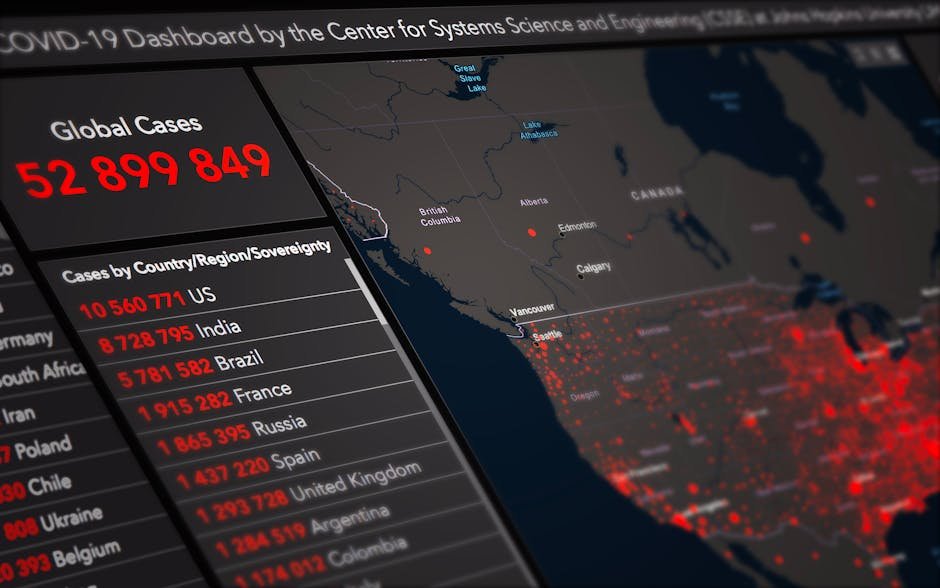Hey there, aspiring digital nomad! The idea of working from a beach in Bali or a café in Lisbon sounds dreamy, but what’s the real scoop on digital nomad life? In 2025, with over 35 million digital nomads worldwide (up 112% since 2019), this lifestyle is more accessible than ever, thanks to remote work trends and digital nomad visas in 60+ countries. Whether you’re eyeing Thailand’s DTV or Spain’s nomad visa, this guide breaks down the pros and cons of digital nomad life, grounded in 2025 realities, web insights, and X community sentiment. Let’s unpack the highs and lows of living and working on the move!
What is Digital Nomad Life?
Digital nomads are location-independent professionals—freelancers, remote employees, or entrepreneurs—who work via laptops and Wi-Fi, often moving between countries. They leverage visas like Thailand’s LTR or Portugal’s D8 to live legally abroad, prioritizing flexibility, travel, and work-life balance. Common professions include tech, marketing, design, and consulting, with incomes ranging from $1,500–$10,000+/month.
Pros of Digital Nomad Life in 2025
The allure of digital nomadism is strong, and for good reason. Here are the top advantages, backed by data and real-world insights.
1. Freedom and Flexibility
- What It Means: Choose where and when you work—be it a co-working space in Chiang Mai or a villa in Medellín. Set your hours (within client time zones) and travel at will.
- Reality: 78% of nomads cite flexibility as their top reason for the lifestyle (MBO Partners, 2025). Visas like Spain’s (up to 5 years) or Mauritius’ free Premium Travel Visa make long-term stays easy.
- Example: A freelancer in Bali can work mornings, surf afternoons, and explore temples on weekends.
- X Sentiment: Users rave about “designing your dream schedule” in nomad hubs like Lisbon.
2. Affordable Living
- What It Means: Live in low-cost countries like Thailand ($500–$1,000 USD/month) or Colombia ($600–$1,100 USD) while earning Western salaries.
- Reality: Nomads save 20–50% compared to urban US/EU costs. Co-living spaces (e.g., BeacHub, Thailand, $400–$800/month) bundle housing and workspaces.
- Example: A $3,000 USD/month earner in Udon Thani, Thailand, lives comfortably, saving $1,500+ monthly.
- X Sentiment: Posts highlight “stretching dollars” in Southeast Asia vs. pricey cities like NYC.
3. Cultural Immersion
- What It Means: Experience local cultures, cuisines, and festivals—think Songkran in Thailand or Carnival in Colombia.
- Reality: 65% of nomads say cultural exposure boosts creativity (Nomad List, 2025). Long-term visas (e.g., Mexico’s 4-year Temporary Resident) allow deep dives into local life.
- Example: A nomad in Oaxaca learns Spanish, joins Day of the Dead festivities, and cooks mole with locals.
- X Sentiment: Users share “life-changing” stories of learning Thai or salsa dancing in Latin America.
4. Vibrant Communities
- What It Means: Connect with like-minded nomads in hubs like Chiang Mai, Lisbon, or Medellín through co-working spaces (e.g., Dojo Bali) or events (Bansko Nomad Fest).
- Reality: 80% of nomads value community (Global Citizen Solutions, 2025). Meetups and X groups (e.g., “Digital Nomads Bali”) foster friendships and collaborations.
- Example: A developer in Bansko, Bulgaria, joins Nestwork’s community dinners, landing a freelance gig via networking.
- X Sentiment: Nomads call hubs “instant families” for solo travelers.
5. Career Growth
- What It Means: Remote work opens global opportunities—freelance for US clients from Malaysia or start a tech venture in Estonia.
- Reality: 45% of nomads report higher earnings than in traditional jobs (MBO Partners, 2025). Platforms like Upwork and LinkedIn thrive in 2025.
- Example: A marketer in Portugal leverages EU time zones to work with London startups, doubling their income.
- X Sentiment: Posts celebrate “borderless careers” and skill-building in nomad hubs.
6. Tax Benefits
- What It Means: Many nomad visas (e.g., Costa Rica, Croatia) exempt foreign income from local taxes for 6–12 months; double taxation treaties reduce dual tax burdens.
- Reality: Countries like Mauritius offer no income tax on foreign earnings, saving nomads thousands annually.
- Example: A US nomad in Thailand avoids local taxes on unremitted income, banking savings for travel.
- X Sentiment: Users praise “tax-friendly” destinations like Malaysia and Mauritius.
Cons of Digital Nomad Life in 2025
It’s not all sunsets and smoothies. Here are the challenges, with honest insights into the trade-offs.
1. Loneliness and Transience
- What It Means: Constant travel can lead to shallow connections and homesickness, especially in smaller hubs like Pai, Thailand.
- Reality: 60% of nomads report occasional loneliness (Nomad List, 2025). Short-term stays (e.g., Croatia’s 1-year visa) disrupt deep friendships.
- Example: A nomad in Tulum struggles to bond beyond coworking meetups, missing family back home.
- X Sentiment: Posts warn of “nomad burnout” from frequent moves; some crave stability.
2. Unstable Income and Work Pressure
- What It Means: Freelancers face inconsistent gigs; remote employees juggle time zones (e.g., US calls from Asia).
- Reality: 40% of nomads worry about income stability (MBO Partners, 2025). High visa income thresholds (e.g., Estonia’s $4,884/month) add pressure.
- Example: A designer in Bali loses a major client, scrambling to meet Thailand’s $80,000/year LTR visa requirement.
- X Sentiment: Users stress “hustling hard” to maintain nomad life, especially in pricier EU hubs.
3. Visa and Legal Complexities
- What It Means: Navigating visas, tax laws, and banking (e.g., opening a Thai account) is time-consuming and costly.
- Reality: Visa applications (e.g., Spain’s €80 fee, Malaysia’s $500–$1,000) and renewals require paperwork, translations, and sometimes agents ($500–$2,000). Some countries (e.g., Thailand) have high financial barriers.
- Example: A nomad in Mexico spends weeks securing a Temporary Resident Visa, delaying work.
- X Sentiment: Complaints about “bureaucratic headaches” in countries like Thailand and Estonia.
3. Internet and Infrastructure Issues
- What It Means: Unreliable Wi-Fi or power outages in remote areas (e.g., Koh Phangan, Thailand) disrupt work.
- Reality: While hubs like Lisbon (100 Mbps) are reliable, rural spots like Pai (20–30 Mbps) lag. 25% of nomads cite connectivity as a top issue (Global Citizen Solutions, 2025).
- Example: A developer in Ubud, Bali, misses a deadline due to a monsoon-related internet outage.
- X Sentiment: Frustration over “spotty Wi-Fi” in Southeast Asia; EU hubs get better reviews.
5. Healthcare and Safety Concerns
- What It Means: Navigating foreign healthcare systems and safety risks (e.g., petty crime in Latin America) can be daunting.
- Reality: Most visas require health insurance (e.g., SafetyWing, $50–$150/month), but rural areas may lack quality hospitals. Crime risks in cities like Bogotá require vigilance.
- Example: A nomad in Colombia pays out-of-pocket for a minor injury, as local clinics don’t accept their insurance.
- X Sentiment: Mixed reviews; Costa Rica and Spain score high for safety, while some avoid Mexico’s riskier areas.
6. Work-Life Balance Struggles
- What It Means: The line between work and travel blurs, leading to overwork or guilt over sightseeing.
- Reality: 50% of nomads report burnout from balancing deadlines and exploration (Nomad List, 2025). Time zone differences (e.g., 12-hour gap with US clients) disrupt sleep.
- Example: A writer in Lisbon skips cultural tours to meet US client calls at midnight.
- X Sentiment: Posts lament “always-on” pressure; some nomads advocate for strict schedules.
Comparison of Pros and Cons
| Aspect | Pros | Cons |
|---|---|---|
| Freedom | Work anywhere, flexible hours | Loneliness, transient connections |
| Cost | Low living costs in Thailand, Colombia | Unstable income, visa costs |
| Culture | Immersive experiences, creativity boost | Language barriers, cultural adjustment |
| Community | Global nomad networks, collaboration | Hard to form deep bonds in short stays |
| Career | Global opportunities, higher earnings | Time zone conflicts, client pressure |
| Taxes/Finances | Tax exemptions, savings potential | Complex tax laws, banking hurdles |
| Infrastructure | Fast Wi-Fi in hubs like Spain, Portugal | Unreliable internet in rural areas |
| Health/Safety | Access to global healthcare plans | Variable healthcare quality, safety risks |
Financial and Cost Analysis
- Income Needs: $1,500–$5,000 USD/month to meet visa requirements (e.g., Colombia: $684; Estonia: $4,884). Average nomad income: $4,000 USD/month (MBO Partners, 2025).
- Living Costs: $500–$2,000 USD/month. Cheapest in Thailand/Colombia ($500–$1,100); priciest in Spain/Portugal ($900–$1,600).
- Visa Costs: $0 (Mauritius) to $1,500 (Thailand). Most are $80–$200 (e.g., Spain, Croatia).
- Additional Costs:
- Co-working: $100–$400/month (e.g., Dojo Bali, $150).
- Health insurance: $50–$150/month.
- Travel: $200–$1,000/month (flights, buses).
- Total Monthly Budget: $800–$3,000 USD, depending on location and lifestyle.
Tips for Thriving as a Digital Nomad
- Build a Routine: Set work hours (e.g., 9 AM–2 PM) to balance exploration and productivity.
- Choose Hubs Wisely: Start in nomad-friendly cities (Chiang Mai, Medellín) for community and infrastructure.
- Secure Income: Line up 2–3 clients or a stable remote job before moving. Use platforms like Upwork or Toptal.
- Invest in Insurance: Get global coverage (e.g., SafetyWing, ~$50/month) for peace of mind.
- Join Communities: Engage on X (e.g., “Digital Nomads Thailand”) or Nomad List for tips and meetups.
- Simplify Visas: Use services like Emerhub ($500–$2,000) for complex applications (e.g., Thailand, Malaysia).
- Stay Connected: Schedule calls with family/friends to combat loneliness.
For top nomad destinations, check out our guide on Best Digital Nomad Visas in 2025.
Official Link
For nomad resources and visa guides, visit Nomad List: www.nomadlist.com. This platform offers community insights, cost-of-living data, and visa info for 2025.
Conclusion
Digital nomad life in 2025 is a thrilling mix of freedom, affordability, and cultural immersion, with pros like flexible schedules, low costs in places like Thailand, and vibrant communities in hubs like Lisbon. But it comes with cons—loneliness, income instability, and visa hassles can test your resilience. By choosing nomad-friendly destinations, securing stable work, and leveraging co-working spaces (e.g., Dojo Bali, Sun and Co.), you can maximize the highs and mitigate the lows. The reality? It’s not always Instagram-perfect, but with planning, it’s a life-changing adventure. Grab your laptop, join the 35 million nomads, and make 2025 your year to roam and work!







